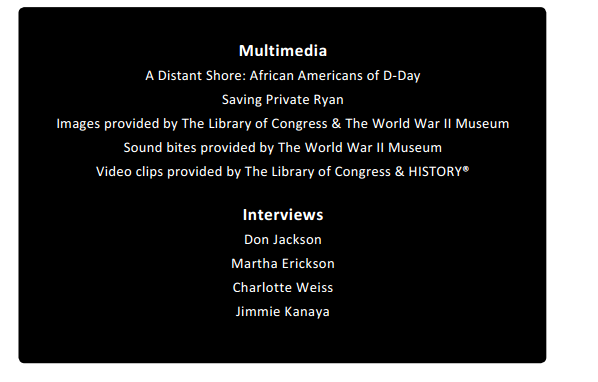MAKING YOUR Annotated Bibliography
An annotated bibliography is a list of all the sources you used, properly cited using MLA Style, separated by primary and secondary--and includes details on how the source was used and how it helped you understand your topic.
|
An Annotated Bibliography is required! Not having a bibliography where you list your research and credit your sources is committing plagiarism.
You will look at many more sources than you actually use. You should list only those sources that contributed to the development of your entry. Sources of visual materials and oral interviews must be included. The annotations for each source must explain how the source was used and how it helped you understand your topic. |
How to build your Annotated Bibliography |
Citations
Technical Details
|
How to annotate your citations |
Annotations in Citations: (Describing your work)
|
What should it look like? |
EXAMPLE:
Bates, Daisy. The Long Shadow of Little Rock. 1st ed. New York: David McKay Co. Inc., 1962. Daisy Bates was the president of the Arkansas NAACP and the one who met and listened to the students each day. This first-hand account was very important to my paper because it made me more aware of the feelings of the people involved. |
Crediting Photos and graphics for exhibits & websites |
Photo Credits--Exhibits and Websites
|
CREDITS FOR documentaries |
|
FREQUENTLY ASKED QUESTIONS
HOW MANY SOURCES SHOULD I HAVE IN MY ANNOTATED BIBLIOGRAPHY?I THINK IT'S PRIMARY BUT SOMEBODY ELSE SAYS SECONDARY. WHAT DO I DO?I FOUND A PRIMARY SOURCE INSIDE OF A SECONDARY SOURCE...WHAT DO I DO? |
We can't tell you a specific number of sources, as that will vary by the topic and by the resources to which you have reasonable access. For some topics, such as the Civil War or many 20th-century U.S. topics, there are many sources available to you. For other topics, such as those in ancient history or non-U.S. history, there likely are far fewer sources available to you. The more good sources you have, the better, but don't pad your bibliography. Only list items which you actually use; if you looked at a source but it didn't help you at all, don't list it in your bibliography.
You should use the annotation to explain why you categorized a particular source as primary or secondary, If that is likely to be at all controversial. Historians do sometimes disagree and there's not always one right answer, so justify your choice to the judges. There's a really good link for some of the more challenging things to cite if you click this sentence. You also may use the annotation to explain that a book or other secondary source included several primary sources used for the paper. Examples: "This book included three letters between person X on the frontier and person Y back in New England, which provided insight into the struggles and experiences of the settlers." "This book provided four photos of settlers on the Great Plains and their homes, which were used on the exhibit." |

